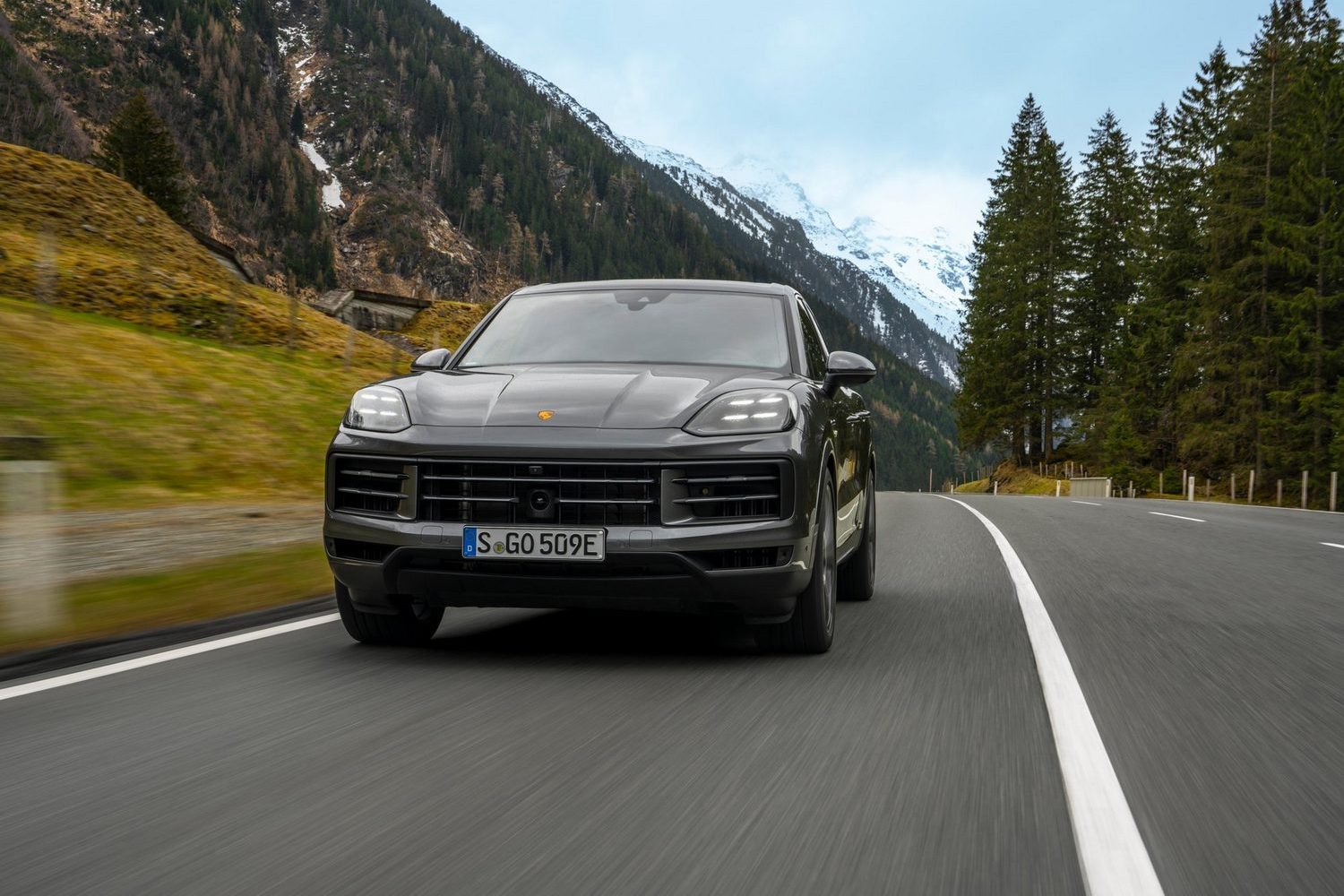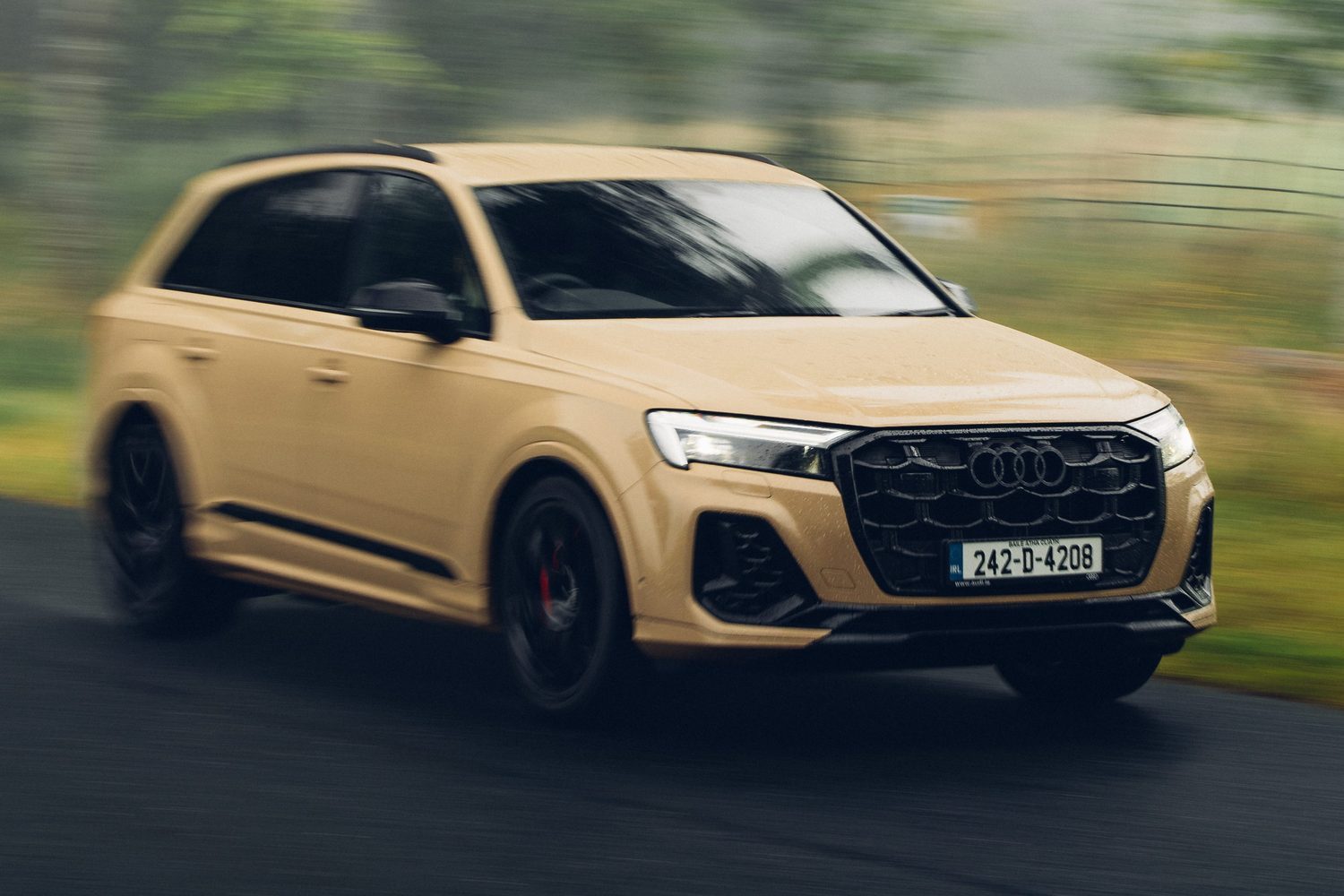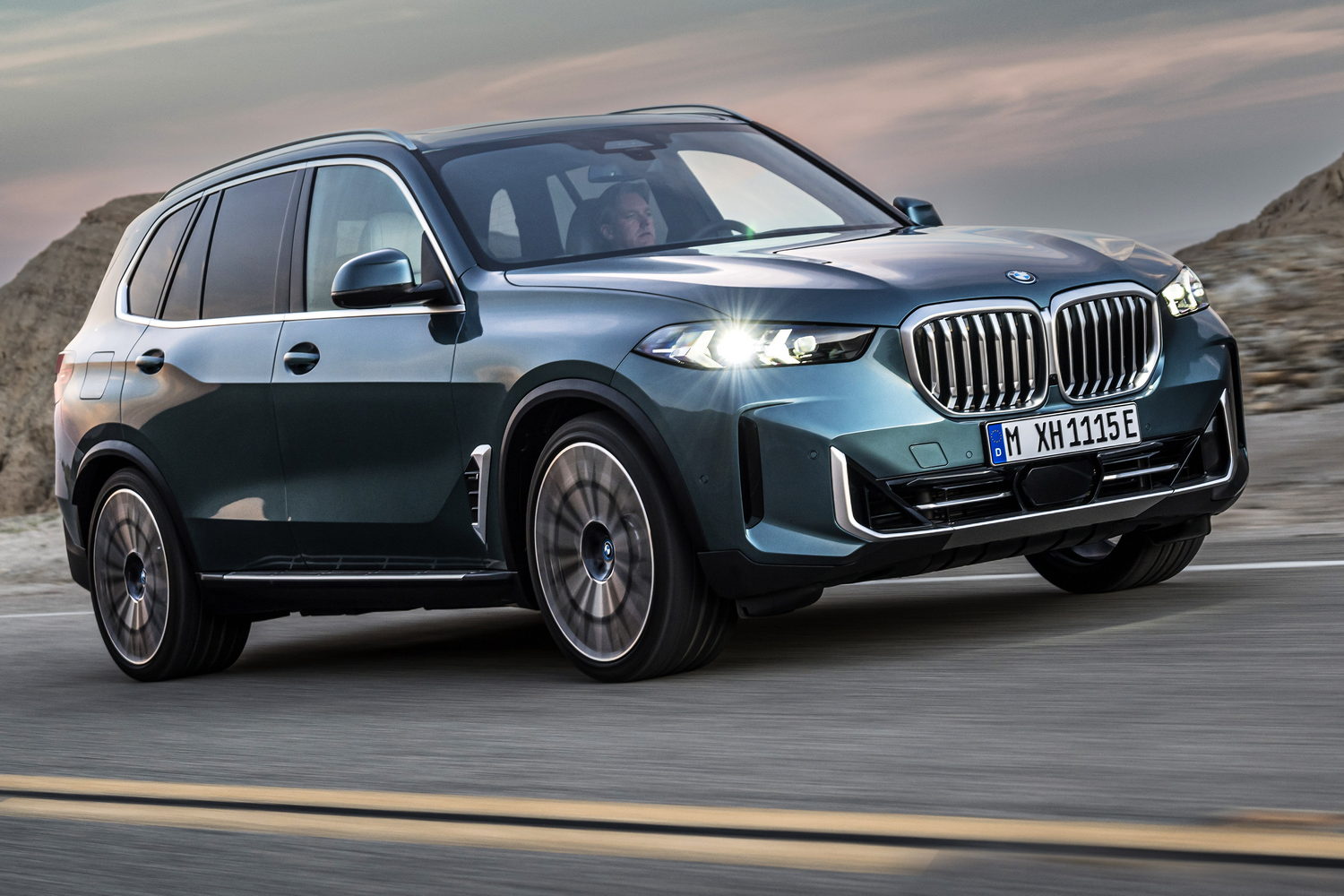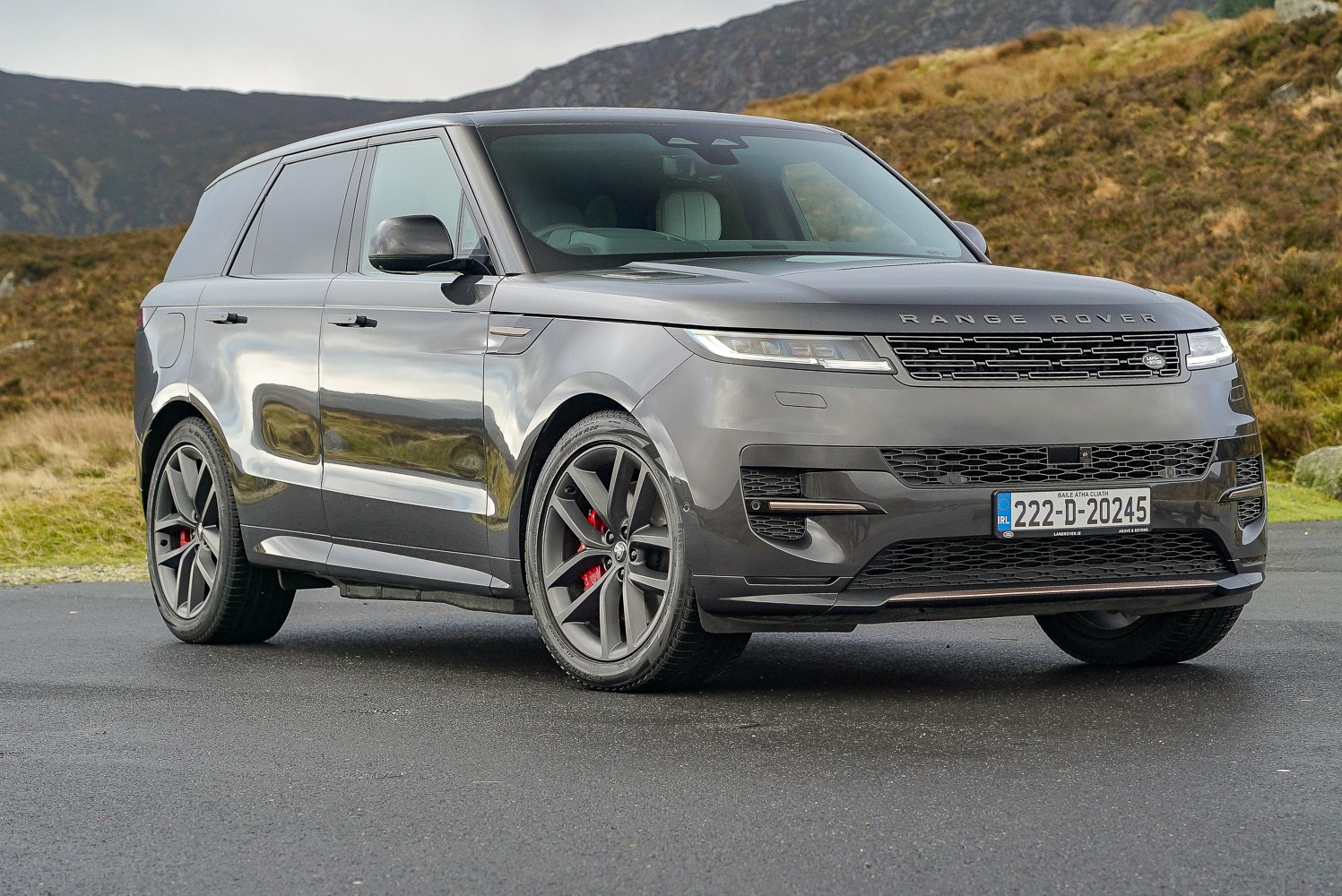Nobody has ever called the Porsche Cayenne cheap, but after sampling pretty much all the more expensive versions over the past 12 months or so, we find ourselves driving the least expensive model in the Cayenne line-up. Yet thanks to Irish motor tax rules, the E-Hybrid SUV you see here is far from the least powerful option on Porsche’s books.
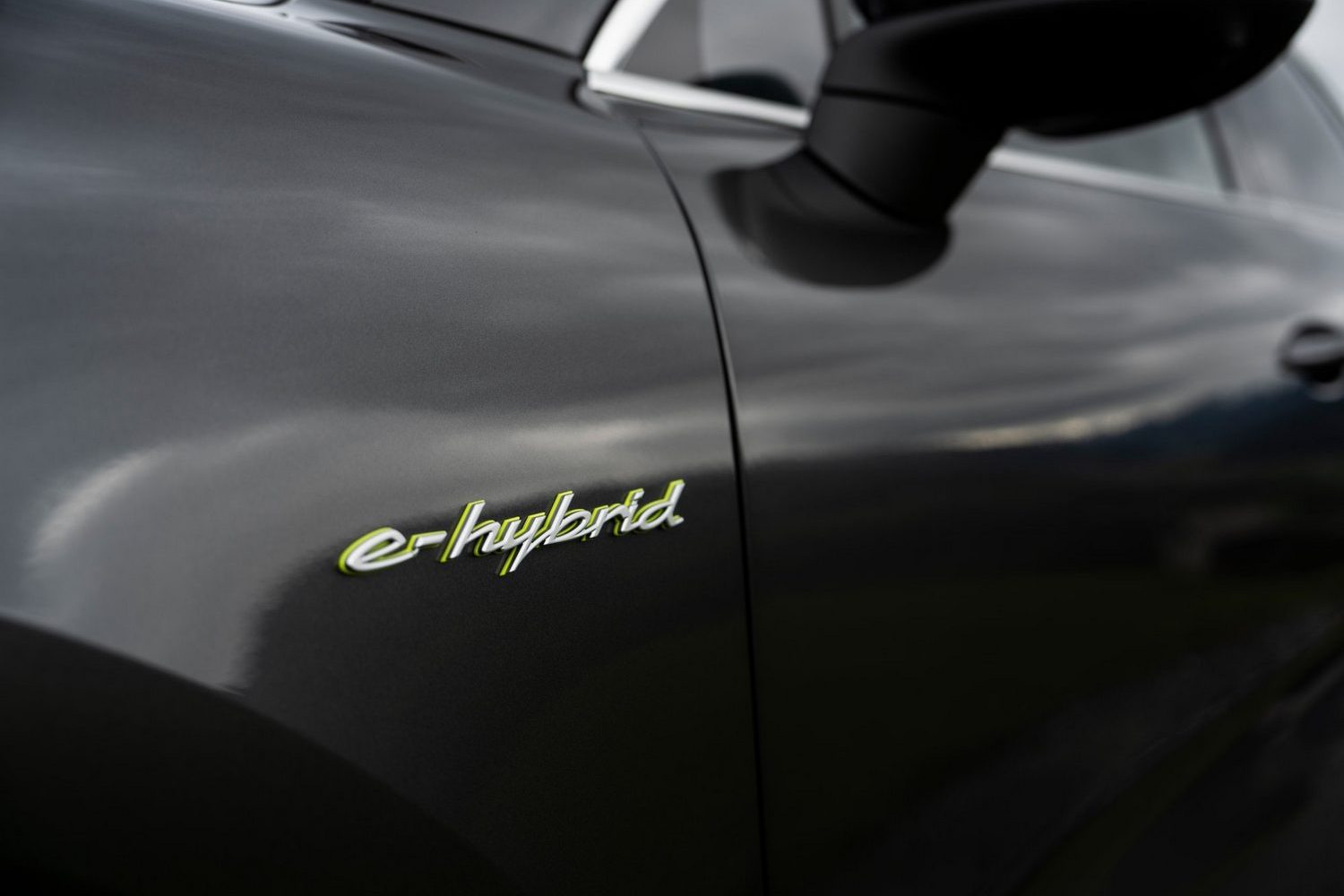
We have already tried the improved V6 powertrain in the Cayenne Coupe, but this is our first taste of it in the more conventional (and cheaper) SUV body. So, will it prove to be the most compelling combination of performance and economy, or will the allure of more expensive models prove too great?
What does the Porsche Cayenne E-Hybrid look like?
As the cheapest model in the Cayenne range, and one of the most basic, the E-Hybrid really looks as plain as a Cayenne ever will. The shape hasn’t evolved that much in the past seven or eight years, so it’s still instantly recognisable as a Cayenne, and the details aren’t all that different either.
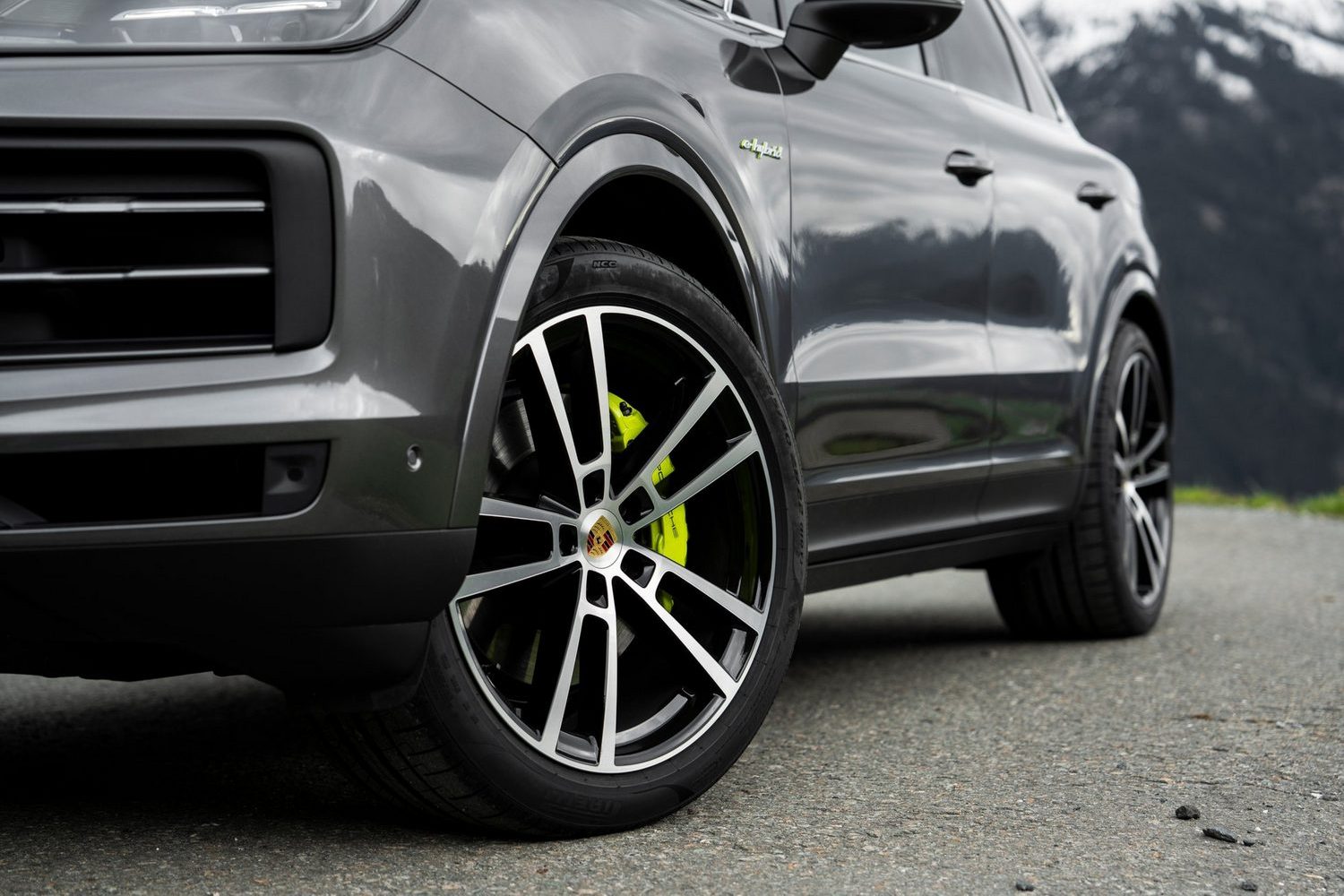
Yes, the latest-generation car brought in a new nose, more aggressive arches and new headlights, and there are some new wheel designs. But in that, the E-Hybrid is no different to any other Cayenne. Further back, there’s a new rear bumper and there are some new paint colour options, but it’s all pretty minor stuff. And because this is one of the less powerful Cayennes, it’s also one of the less in-your-face, aggressive-looking examples.
But it’s handsome enough, and it’s certainly upmarket. Nobody is going to mistake it for a Dacia, what with the big wheels, cool lines and the posh badge on the front. And apart from the badges on the sides and the rear (which can be removed by the manufacturer if you so wish), you’d never even know it was a hybrid. Especially with those big exhausts.
A look inside the Porsche Cayenne E-Hybrid
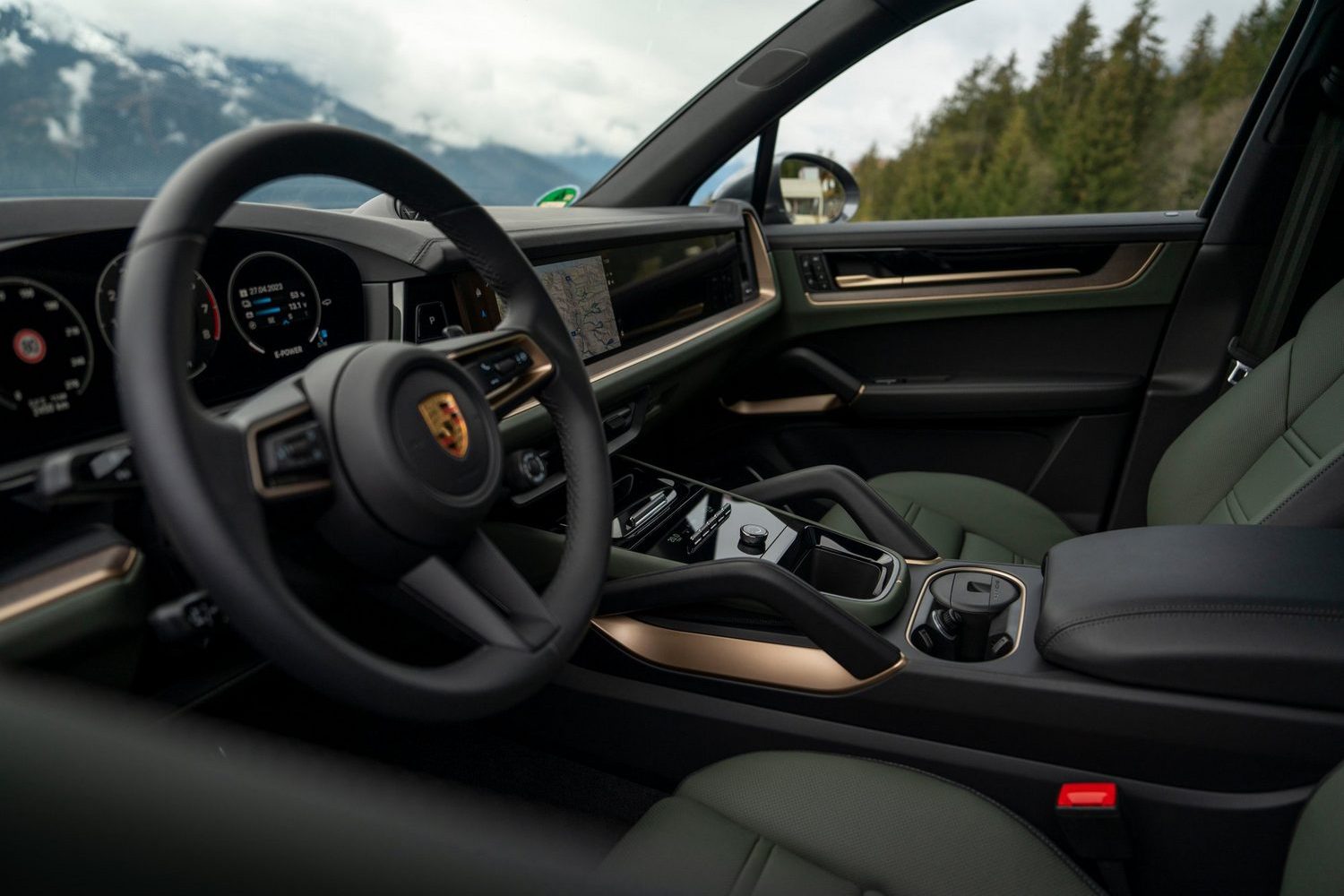
Little in the Cayenne cabin has changed since we drove the Cayenne E-Hybrid Coupe in May 2023, so from the driver’s seat, the SUV model feels exactly the same. You get the same digital instrument display and massive touchscreen, while the gear selector is the same awkward toggle arrangement on the dashboard.
That slight ergonomic hiccup isn’t too bad once you’re accustomed to it, and it means there’s loads of space on the centre console for the climate control panel, which is happily separate from the touchscreen. Generally speaking, then, the Cayenne’s dash is quite ergonomically laid out, and the style is smart enough, if not especially minimalist. Perhaps more importantly, it feels unerringly robust and well made, with lots of lovely materials that all feel really solidly joined together.
Where the E-Hybrid SUV differs from the Coupe, however, is further back. Rear visibility is a little better, thanks to the more conventionally shaped rear window, complete with a windscreen wiper, and rear cabin space is improved. It’s not that the Coupe is bad - there’s still enough room in there to hold four adults comfortably - but the SUV gives them a tad more headroom.
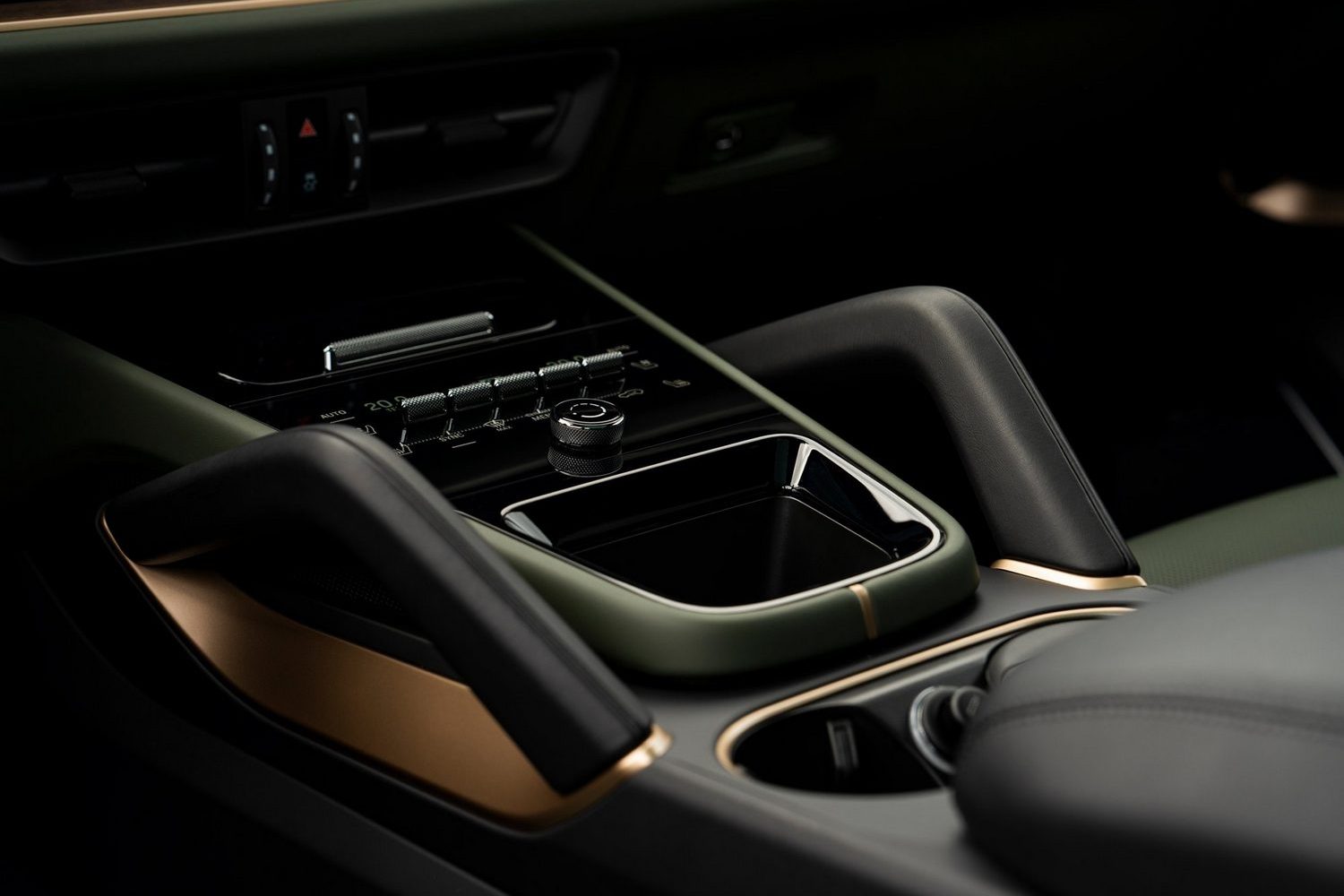
It also provides a lot more boot space, although the numbers do look a little confusing written down. Whereas a ‘basic’ Cayenne V6 has 698 litres of boot space, the hybrid system takes up some of that room and cuts the total available to 545 litres. But that’s still more than you get in the equivalent Coupe, which has a 404-litre luggage bay. And those figures don’t take into account the SUV’s more useful shape, which allows bulky items to be loaded more easily.
The Porsche Cayenne E-Hybrid’s on-board technology
By and large, the Cayenne E-Hybrid’s on-board tech is much the same as that of any other Cayenne model, although customer specifications will determine exactly what is on display in the Porsche’s cabin.
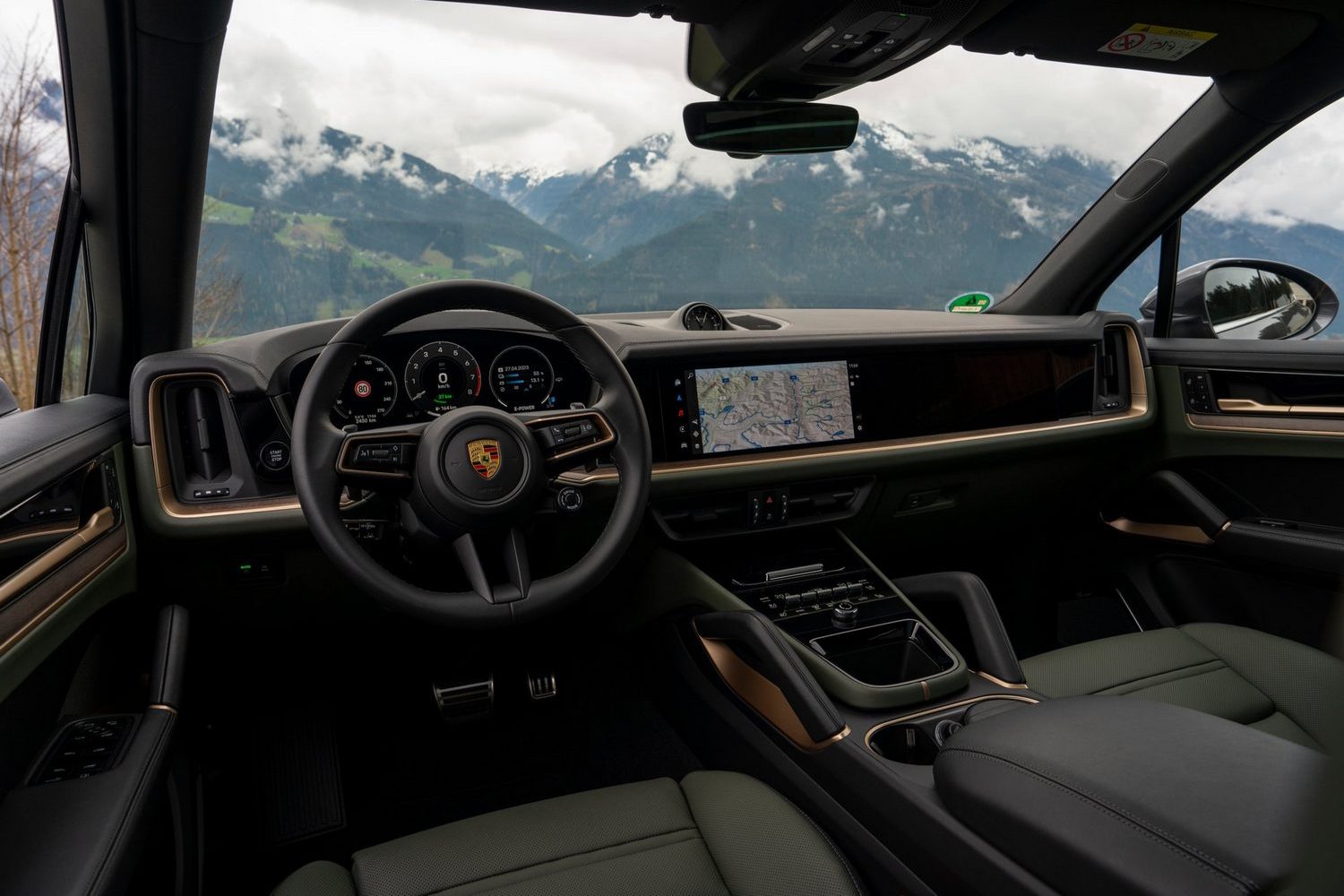
As standard, E-Hybrid models come with the digital instrument cluster that’s common to all current-generation Cayennes, and the same central touchscreen, both of which have a few extra displays for hybrid-specific functions, such as a battery level reading in the instrument display and an e-motor mode selector in the touchscreen, which allows you to control whether the car maintains the battery level or uses the electric power more greedily. Whatever, both screens are sharp, intuitive to use and modern, if not especially remarkable in their functionality and operation.
More remarkable is the optional head-up display - which is projected onto the windscreen and provides a really sharp summary of all the most important data - and the optional passenger display, which sits on the left-hand side of the dash above the glovebox. That allows the passenger to access information and media displays on their own screen, so they aren’t interfering with the driver’s data, and it allows video to be streamed through the car so the passenger can watch a movie or YouTube video on the move. There’s a film in the screen itself that prevents the driver from seeing the display, in a bid to avoid distractions, but that can alter the colours slightly oddly for the passenger.
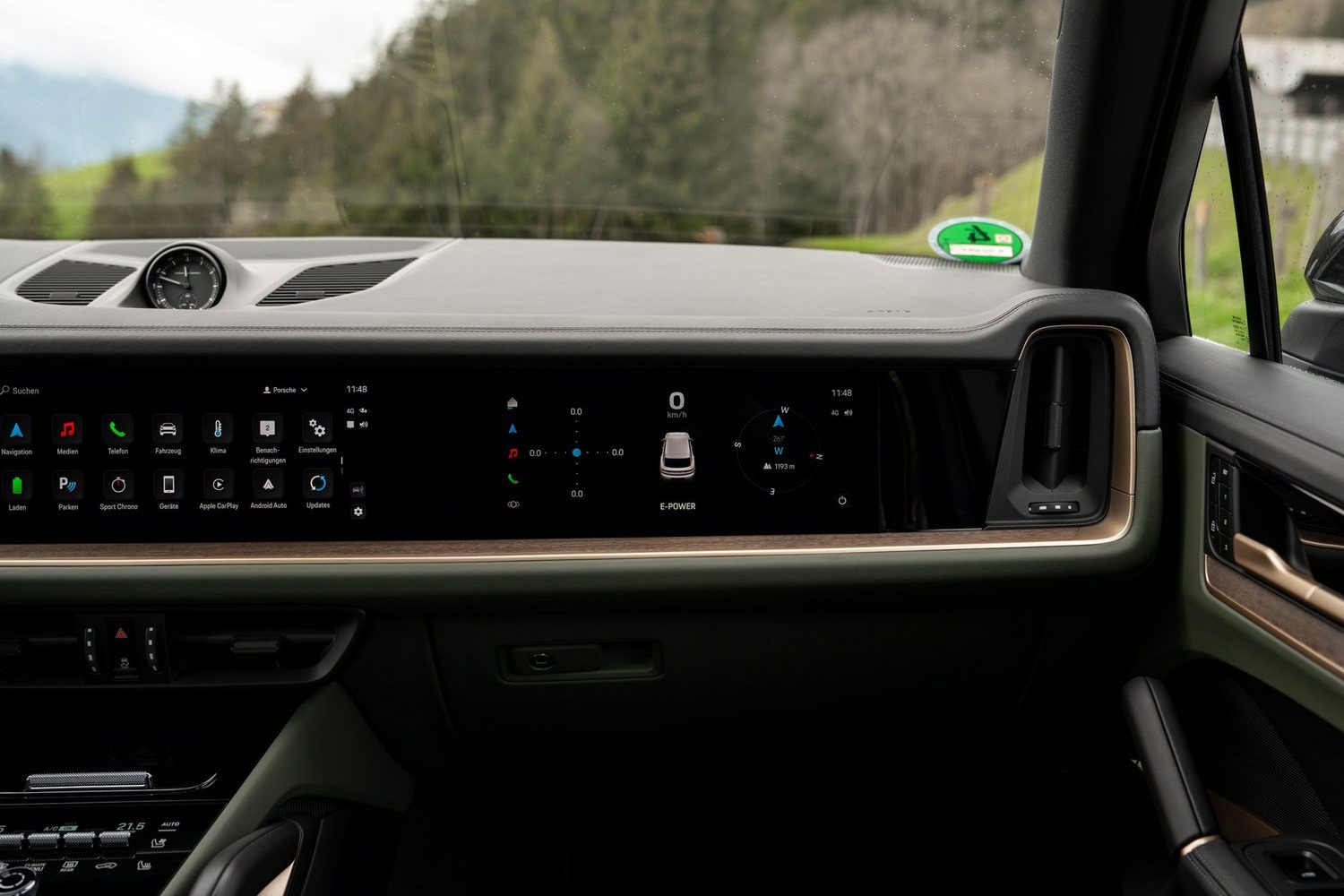
How fast is the Porsche Cayenne E-Hybrid?
Porsche’s E-Hybrid lineup is a bit odd, in that there are a few different E-Hybrid models, but the theory is actually pretty straightforward once you understand it. In essence, Porsche fits a plug-in hybrid system to existing petrol engines. In the case of the S E-Hybrid, therefore, the S’s 4.0-litre V8 petrol engine is combined with a battery pack and an electric motor, while this basic E-Hybrid model takes the 3.0-litre V6 petrol engine from the entry-level Cayenne and adds the same battery and motor combination.
That’s always been the Cayenne way, but Porsche has updated its plug-in hybrid system for the latest-generation models, upping the battery size to 25.9kWh and beefing up the motor to 130kW. That means the car can travel well over 50km on electrical power alone (although the official range of up to 74km is optimistic unless you’re just crawling around town), and it’ll do so at speeds of up to 135km/h, thanks to that more powerful electric motor.
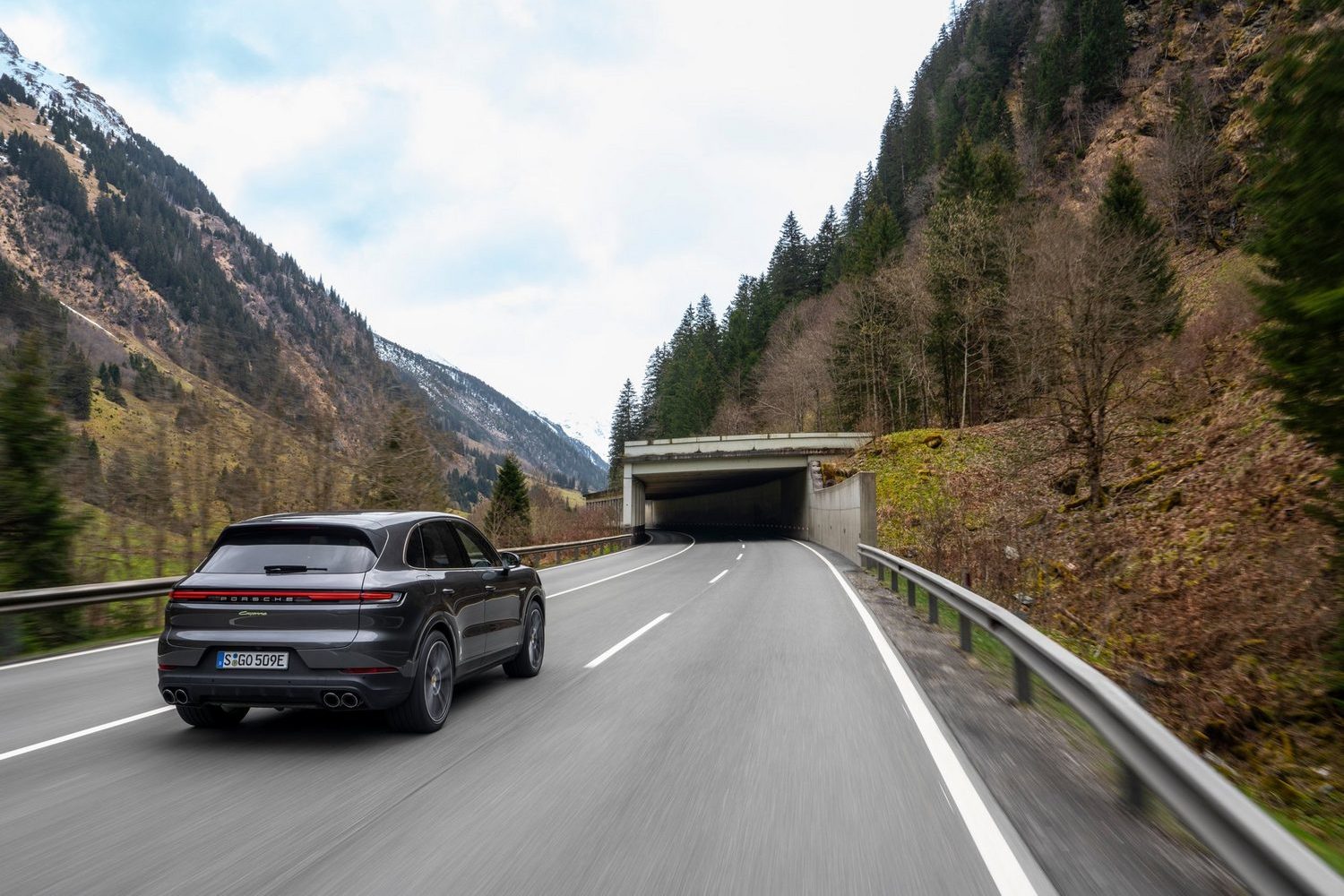
When you combine that with the 3.0-litre V6 petrol engine, you get a total output of 470hp - just 4hp less than the V8 Cayenne S - and that’s distributed between all four wheels via an eight-speed automatic gearbox. As a result, and despite the car’s kerb weight of almost 2.5 tonnes, the E-Hybrid takes 4.9 seconds to get from 0-100km/h and will keep accelerating all the way to 254km/h. In that, its performance is pretty similar to that of the Cayenne S, which costs €65,000 more.
Admittedly, the E-Hybrid’s V6 petrol engine isn’t as sonorous as the V8 in the S and S E-Hybrid models, but it’s hardly dull. Combine it with the optional sports exhaust system and it’ll make a menacing snarl, but even the base version produces a pleasant, aristocratic growl when you stab the throttle pedal. Most of the time, though, it’ll be very quiet, and you’ll barely be able to tell whether the petrol engine is running or not. The entire system is very smooth and refined, making the Cayenne hugely relaxing on the road.
It will not, however, be especially efficient. The official figures might suggest you’ll get away with burning less than two litres of unleaded every 100km, but that is based on a few over-optimistic assumptions. Mainly that most of your journeys will be short and you’ll charge the battery regularly. If that sounds like your lifestyle, the E-Hybrid versions of the Cayenne will be efficient, but if not, they’ll be little more wallet friendly than any other variant.
Driving the Porsche Cayenne E-Hybrid
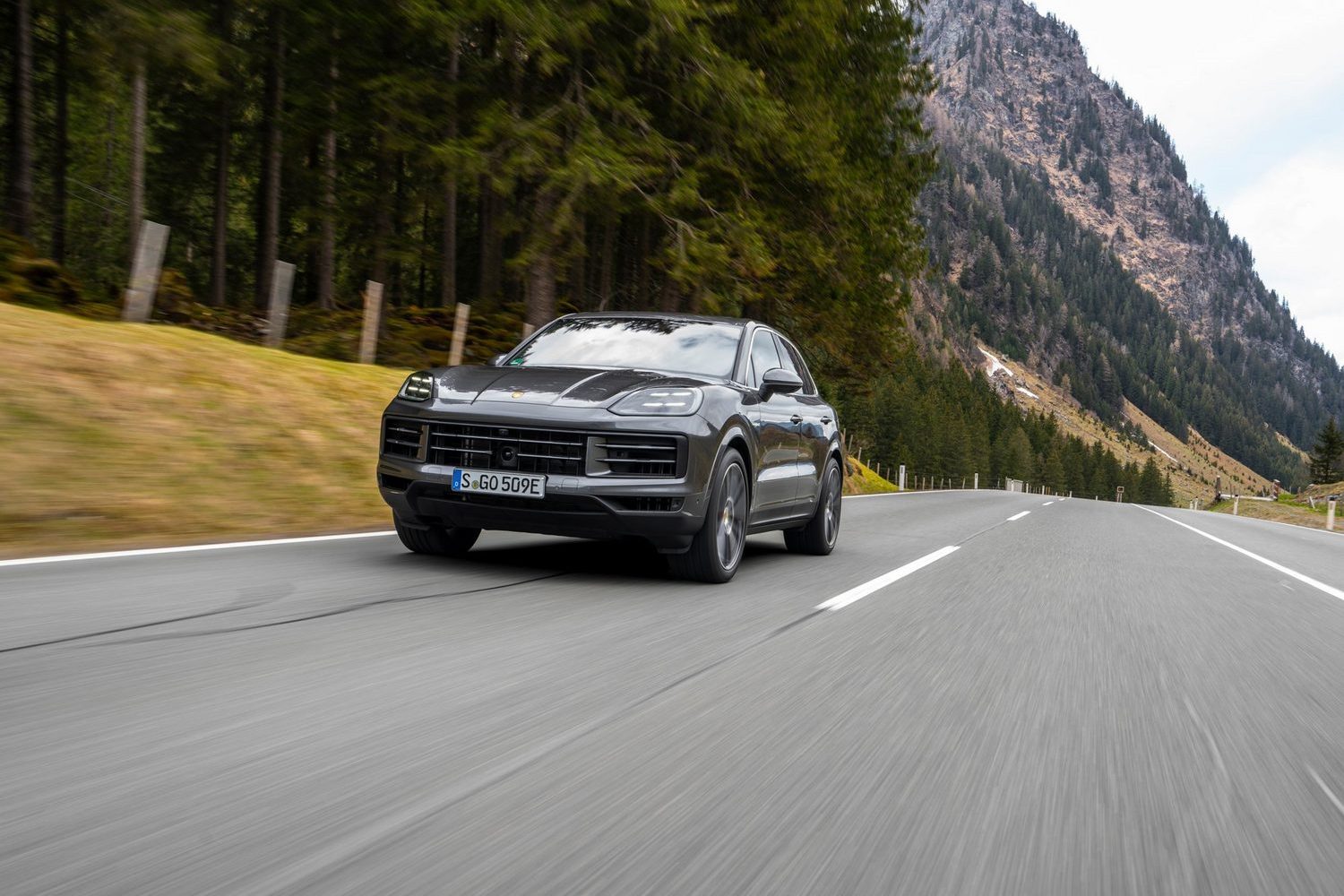
Despite the relative efficiency of the E-Hybrid system - at least in test conditions - even this version of the Cayenne does not pretend to be economy-orientated. The Cayenne has long been among the sportiest of SUVs, and the inclusion of hybrid technology does nothing to endanger that reputation.
As with other Cayennes, the E-Hybrid has precise and nicely weighted steering that sets the tone for the rest of the driving experience, providing just the right amount of feel and feedback. Then there’s the body control, which is excellent no matter whether you choose the optional air suspension or not. Admittedly, the €2,142 air suspension is a bit better at keeping the car level in corners, but only fractionally so, and the standard set-up is more than up to the task.
And it’s comfortable enough, too. The Cayenne doesn’t ride as smoothly as some big 4x4s, but given the way it handles, the price you pay in the comfort stakes is remarkably small. Especially on the motorway, where the Cayenne simply wafts along, almost entirely unbothered by whatever’s under the wheels. It isn’t quite so spectacular on country lanes or around town, but it’s still impressive for something that feels so agile and controlled in the bends.
We’re particular fans of the brakes, which can often be a bit underwhelming in hybrid cars, where the on-board systems have to balance the regenerative braking that helps maximise battery range with the stopping power of the hydraulic brakes. Sometimes, you can feel that argument taking place under the ball of your foot, but not in the Cayenne. It’s silky smooth and confidence-inspiring.
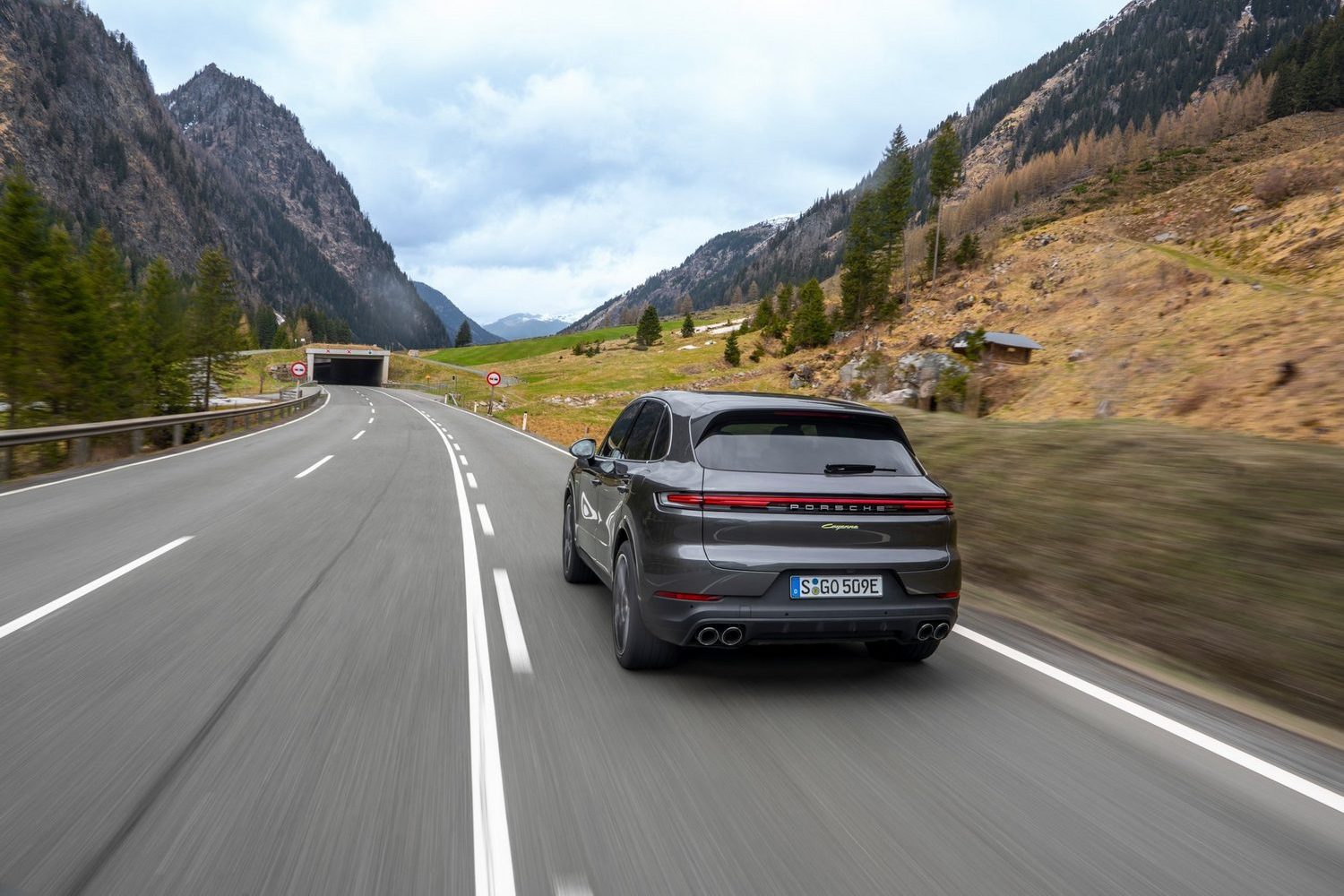
Naturally, some of the Cayenne’s driving experience will alter depending on which options you specify. The E-Hybrid gets the Sport Chrono package as standard, giving it driving modes that allow you to tailor the throttle response and steering to the conditions, and cars with air suspension will become more or less comfortable and offer more or less body control, depending on the mode selected. Choose the adaptive air suspension and you can also add the €3,102 Porsche Dynamic Chassis Control, which is capable of almost entirely eliminating body lean in the Sport Plus setting.
Four-wheel steering is perhaps a more useful optional extra, though, making the Cayenne a bit more manoeuvrable in tight spaces, and we’d heartily recommend it to anyone likely to spend a lot of time manoeuvring in car parks or town centres. But we’d steer clear of the ceramic brake option, which doesn’t offer the same feel as the conventional set-up that comes as standard.
Whichever options you choose, though, the Cayenne will not just prove impressive on the road. With a maximum trailer weight of 3.5 tonnes, even the E-Hybrid will prove a useful tow car, and it’ll hold its own off-road, too. Maybe the Cayenne isn’t as brilliant as the Range Rover Sport when it comes to serious mud-plugging, but it’ll do anything its target market will ask of it, and with the right tyres on board, it’ll be great in the snow.
How many child seats can I fit in the Porsche Cayenne?
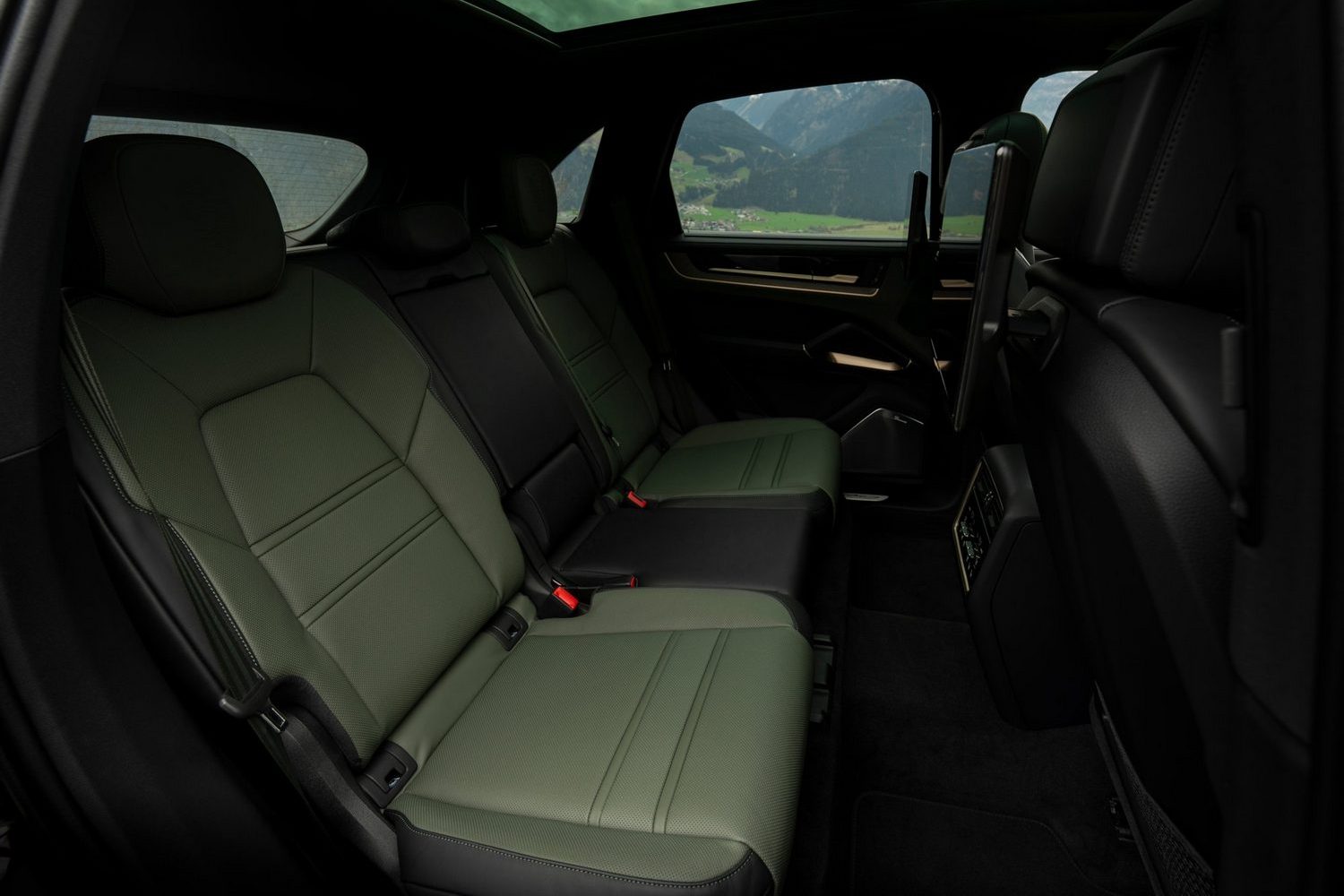
Like other Cayennes, the E-Hybrid comes with two ISOFIX child seat mounting points in the rear seats, which is fairly standard across the luxury SUV spectrum. And with a taller roofline than the Coupe, access to those back seats should be easy enough. However, those with several young children might be lured away by the handful of alternatives with an ISOFIX mounting point in the front passenger seat, such as the Audi Q7.
How much is the Porsche Cayenne E-Hybrid in Ireland?
Due to quirks of the Irish motor tax system, the Cayenne E-Hybrid is noticeably cheaper than the basic Cayenne that’s powered purely by a V6 petrol engine. In fact, at €106,851, the E-Hybrid is almost €40,000 cheaper than the ‘standard’ Cayenne and almost €70,000 cheaper than the S, which has just 4hp more.
Admittedly, you’re going to want to add a few optional extras to the standard specification - a quick play on the configurator suggests about €30,000 of extras is roughly where we’d want to be - but you could do all that and still have a car that’s cheaper than the standard Cayenne, as well as being better equipped.
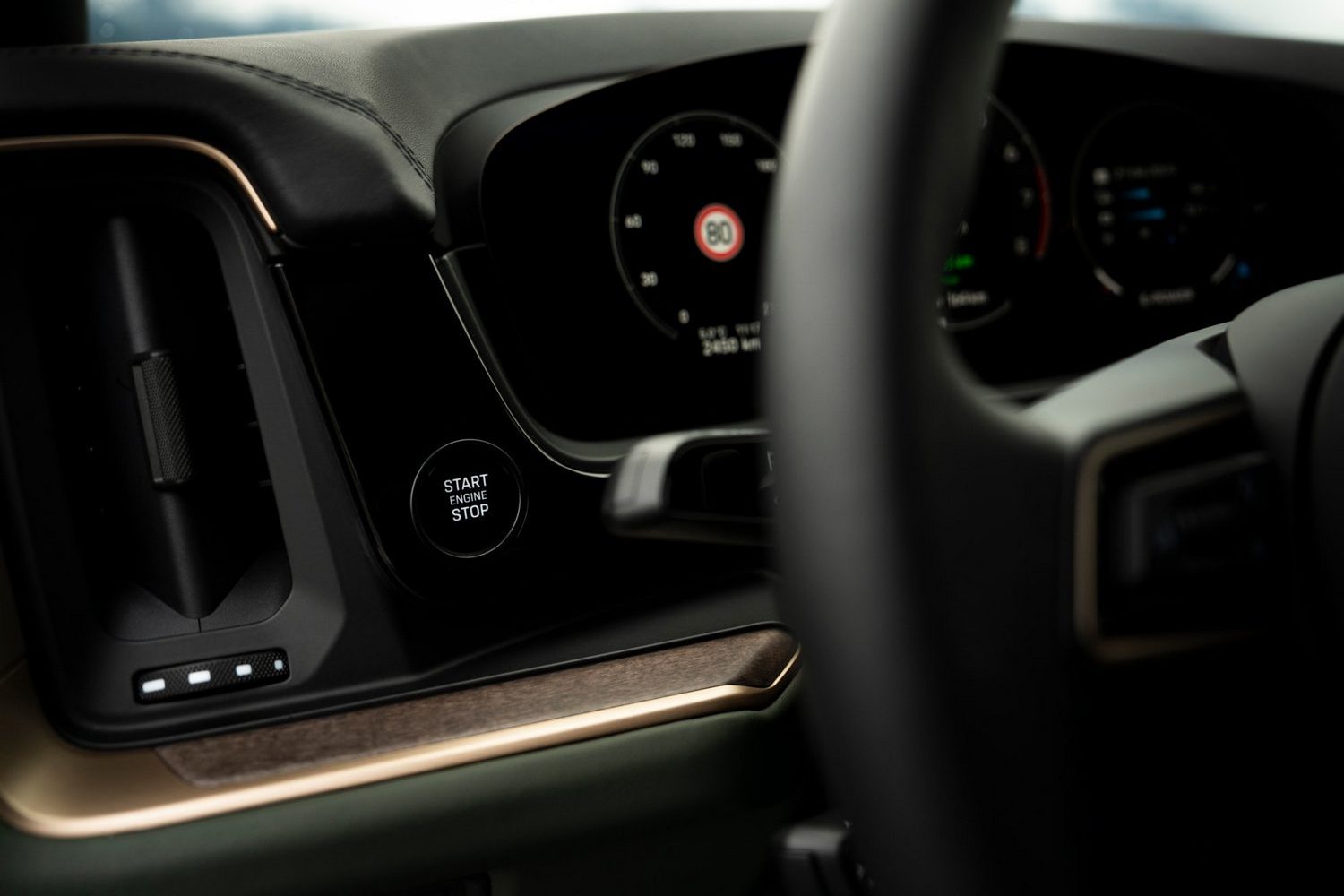
Pretty much regardless of trim level, all Cayennes come with broadly similar specifications as standard, so the E-Hybrid gets the digital instrument display, central touchscreen and climate control, as well as leather upholstery, navigation and a reversing camera. But if you want heated seats, a head-up display or adaptive cruise control, you’re going to have to pay a bit extra. Okay, a lot extra.
The reasons you’d buy a Porsche Cayenne E-Hybrid
With almost as much power as the S but much lower tax, a lower price tag and lower fuel consumption, the E-Hybrid is effectively a no-brainer for Cayenne customers who let their heads rule their hearts. Yes, the S’s V8 rumble is nice, but it’s unnecessary, and the E-Hybrid’s V6 is hardly tuneless. With a few choice options, the E-Hybrid is the Cayenne of choice for most, and praise doesn’t really come much higher than that.
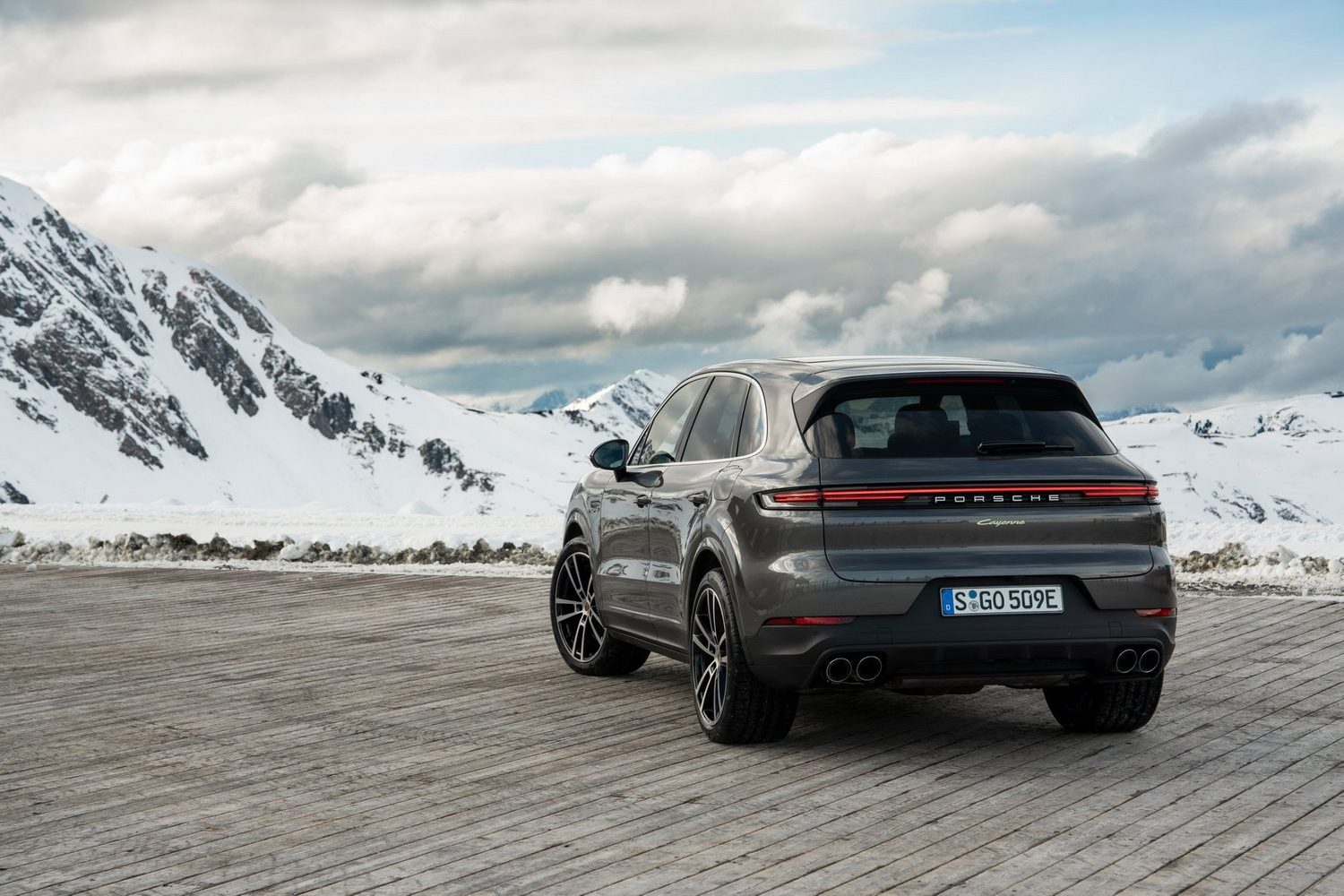
Ask us anything about the Porsche Cayenne E-Hybrid
If you want to know more about the Cayenne E-Hybrid, any other version of the Cayenne, or even any other car currently on the market, then why not head over to the Ask Us Anything page? Our advice service is completely free of charge and allows you to pose your questions, then sit back and relax while our team of experts does the legwork for you.

